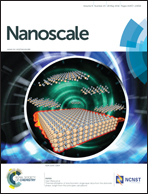Scalable graphene production: perspectives and challenges of plasma applications
Abstract
Graphene, a newly discovered and extensively investigated material, has many unique and extraordinary properties which promise major technological advances in fields ranging from electronics to mechanical engineering and food production. Unfortunately, complex techniques and high production costs hinder commonplace applications. Scaling of existing graphene production techniques to the industrial level without compromising its properties is a current challenge. This article focuses on the perspectives and challenges of scalability, equipment, and technological perspectives of the plasma-based techniques which offer many unique possibilities for the synthesis of graphene and graphene-containing products. The plasma-based processes are amenable for scaling and could also be useful to enhance the controllability of the conventional chemical vapour deposition method and some other techniques, and to ensure a good quality of the produced graphene. We examine the unique features of the plasma-enhanced graphene production approaches, including the techniques based on inductively-coupled and arc discharges, in the context of their potential scaling to mass production following the generic scaling approaches applicable to the existing processes and systems. This work analyses a large amount of the recent literature on graphene production by various techniques and summarizes the results in a tabular form to provide a simple and convenient comparison of several available techniques. Our analysis reveals a significant potential of scalability for plasma-based technologies, based on the scaling-related process characteristics. Among other processes, a greater yield of 1 g × h−1 m−2 was reached for the arc discharge technology, whereas the other plasma-based techniques show process yields comparable to the neutral-gas based methods. Selected plasma-based techniques show lower energy consumption than in thermal CVD processes, and the ability to produce graphene flakes of various sizes reaching hundreds of square millimetres, and the thickness varying from a monolayer to 10–20 layers. Additional factors such as electrical voltage and current, not available in thermal CVD processes could potentially lead to better scalability, flexibility and control of the plasma-based processes. Advantages and disadvantages of various systems are also considered.


 Please wait while we load your content...
Please wait while we load your content...